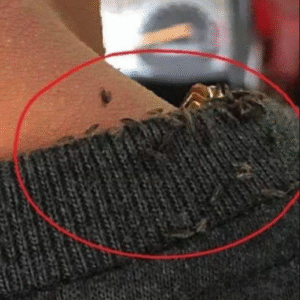The Art of Genuine Cleanliness: More Than Just Tidying Up
When you visit someone’s home, you often see a space that looks tidy and organized. However, this neat appearance can sometimes hide dirt and grime. A quick tidy-up creates order but doesn’t always mean the home is truly clean. Learning how to spot the difference helps you appreciate the real effort behind a clean living space.
Clean vs. Tidy: Know the Difference
Tidiness means putting things in place and organizing for a neat look. Cleanliness, however, means removing dirt, dust, and germs. A home can look tidy but still be dirty. Recognizing this difference is essential to understanding the true state of a space.
How Scent Influences Perceptions
Scent plays a big role in how clean a home feels. A fresh smell can trick you into thinking a place is clean, even when it’s not. On the other hand, unpleasant odors often signal hidden dirt or neglect. Watch out for artificial scents masking bad smells—they may be hiding something.
Surface-Level Cleaning: A Closer Look
People often wipe down visible surfaces before guests arrive. But look closely. Dust may settle on tops of shelves or behind furniture. Shiny countertops with dusty baseboards often reveal superficial cleaning.
Hidden Clutter and Messes
While main rooms might appear orderly, check corners, under furniture, and behind doors. These hidden spots often collect dust and debris, exposing a less thorough clean.
Bathrooms: The True Test
Bathrooms reveal a lot about cleanliness. Quick wipes and organized toiletries don’t guarantee a clean bathroom. Look for spotless fixtures, clean toilets, and no mold or mildew. Grout lines and shower corners often show neglect.
Kitchen Clues to Cleanliness
Kitchens hide dirt well. Wiped countertops don’t tell the full story. Check cabinet doors for grease, corners for crumbs, and floors for stickiness. Dirty appliances like microwaves and ovens indicate poor overall cleaning.
The Importance of Dust-Free Surfaces
Dust reveals superficial cleaning. Run your finger over shelves, picture frames, and electronics. A genuine clean requires regular dusting.
Pet Hair and Odors: Subtle Signs
Pets leave behind hair and odors that expose hidden dirt. Even if owners tidy up, lingering hair on carpets or furniture and persistent smells suggest a lack of deep cleaning.
Floors: Beyond Vacuum Lines
Vacuum lines on carpets look clean but don’t tell the whole story. Inspect corners, under furniture, and baseboards for dirt. On hard floors, check grout lines and sticky spots.
Windows and Mirrors: Reflect Real Cleanliness
Windows and mirrors often get overlooked. Streaks, fingerprints, and dust on these surfaces detract from cleanliness. Clean glass brightens rooms and shows true care.
Achieving Genuine Cleanliness
True cleanliness goes beyond tidying. It demands regular, thorough cleaning that targets both visible and hidden dirt. By spotting signs of superficial cleaning, you’ll value the hard work behind a genuinely clean home. Whether visiting others or caring for your own space, understanding these details creates a healthier, more pleasant environment.




